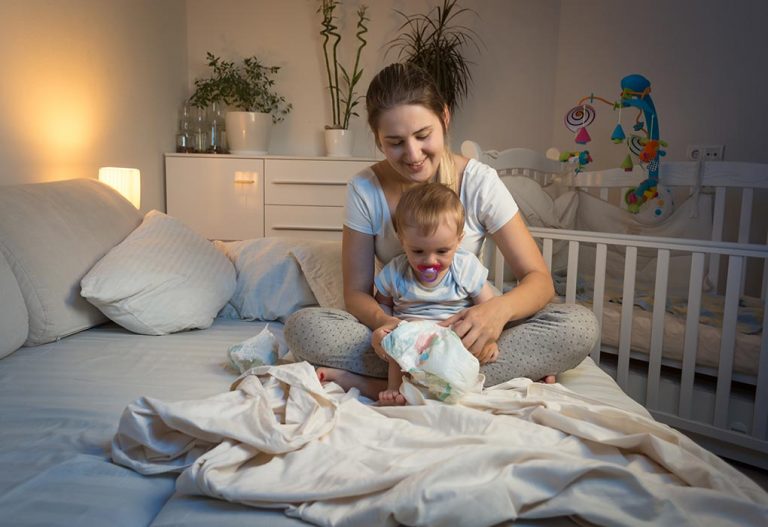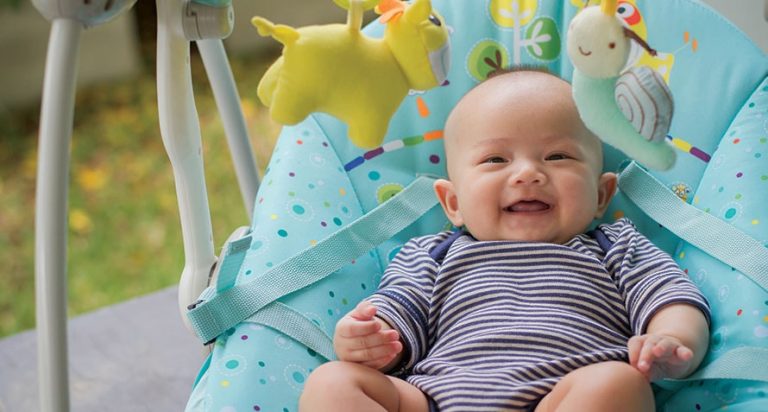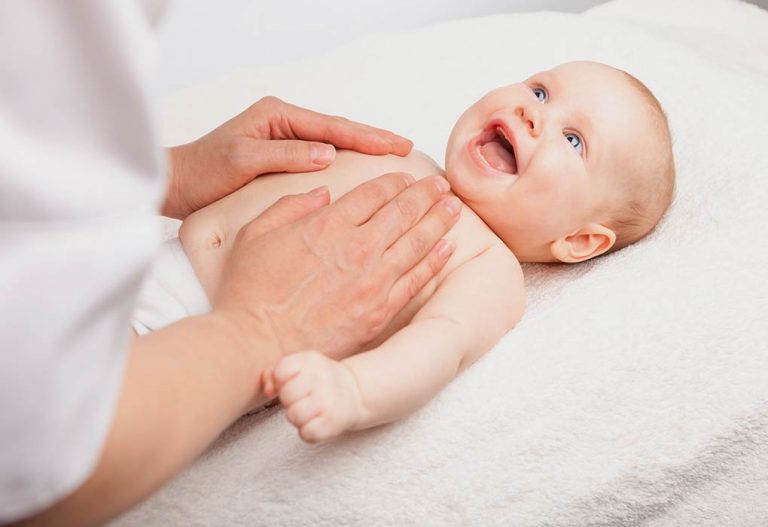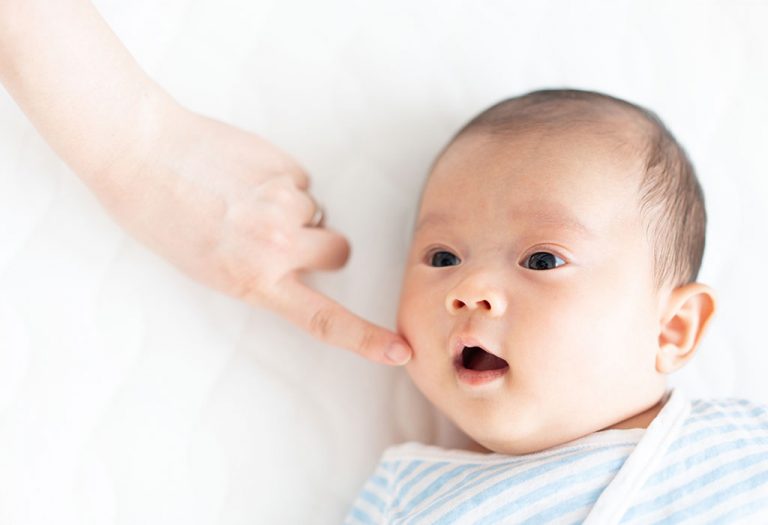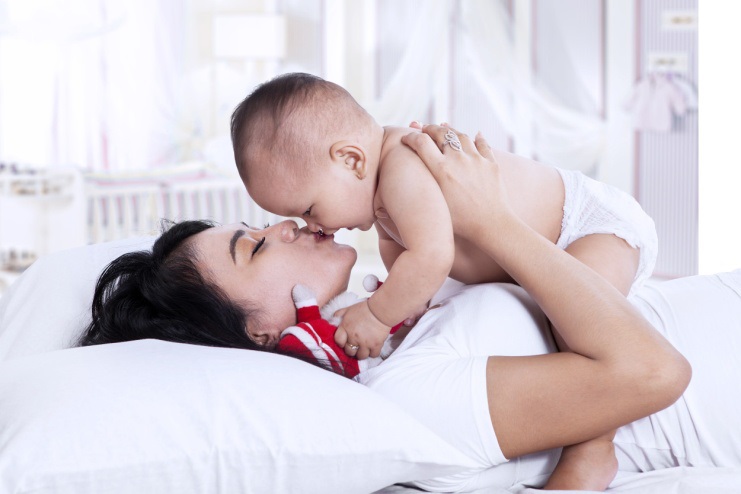Changing Diapers at Night – When & How Often Should You Change?
As a new parent, you will find yourself changing your baby’s diapers more than often. If it has been a couple of months (or more!) since you embraced parenthood, you must have realised that changing your little’s one diapers during the day is not a problem, but at night, it is a daunting task. Why? Because changing diapers at night often tends to wake the baby up and it is very difficult to get the baby to settle and go back to sleep once she is awake. So, what do you do then? Well, we have got you covered! Read on to know more about how often to change a baby’s diapers at night and how (without disrupting her sleep)!
Should You Change Your Baby’s Diaper at Night?
Not changing a diaper at night means that both you and the baby can get uninterrupted sleep at night. However, it also means that the baby’s skin will be in contact with urine all night long and cause diaper rash. The diaper rash causes the skin on the baby’s bottom to become red, itchy, and painful. On the other hand, changing the baby’s diaper at night means that the baby has lesser chances of getting diaper rash. On the downside, it also means that both yours and your baby’s sleep gets interrupted.
Hence, you should make the decision about whether to change the diaper at night after carefully considering all the pros and cons. Parents generally choose to change the baby’s diaper at night to prevent diaper rash.
How Often to Change Baby’s Diaper at Night?
If you are wondering when to change your baby’s diaper at night, the answer is when the diaper is fully soaked with urine or if the baby has pooped. As for how often to change the diaper, it depends on the type of diaper that is being used. It is better to use a super-absorbent overnight diaper than a regular one, as these don’t need to be changed unless completely soaked through or soiled. Using a super-absorbent overnight diaper will ensure that your little one sleeps through the night and you get your sleep too. However, super-absorbent diapers can be expensive, so they are not practical for daytime use. It is also a good idea to put your baby in a fresh, clean diaper just before she falls asleep so that it takes longer for the diaper to get fully soaked.
How to Change Your Baby’s Diaper at Night Without Disrupting Sleep?
There are steps that you can take to make sure that you can change your baby’s diaper without disrupting her sleep. Here are ways that you can go about it:
1. Have a Set Routine
Establishing a regular nighttime routine will ensure that you and your baby get enough rest. Babies find routines comforting. Having a nighttime diaper routine that is different from the daytime routine will help the baby go back to sleep faster. Avoiding the playfulness and eye contact that you have in the daytime will make sure that the baby does not wake up completely while you change her diaper at night.
2. Put on a Fresh Diaper Before Bedtime
Putting on a fresh diaper just before the baby’s bedtime will ensure that the baby’s diaper remains dry for a longer duration. This will give both you and your baby a better chance of getting a peaceful sleep at night.
3. Use Extra-Absorbent Night Time Diapers
Using an extra-absorbent diaper meant especially for nighttime use will reduce the need for a diaper change. These diapers can be expensive, but they also give you and your baby a chance to get uninterrupted sleep through the night.
4. Apply Diaper Rash Cream First
If you are worried about leaving the baby in a wet diaper all night and causing her to get diaper rash, apply diaper rash cream before you put on a fresh diaper. This leads to a barrier between the skin and the wet diaper, ensuring that the baby is protected from diaper rash.
5. Keep the Light Low
Do not turn on bright lights at night during a diaper change. This could wake the baby up and also make it difficult for her to go back to sleep. Use a night light that is low enough to not wake the baby, but sufficient enough for you to change the diaper effectively.
6. Keep the Sounds Minimum
Loud noises and talking to the baby will wake her up completely and make it difficult for her to fall asleep again. So, keep the sounds to a minimum and do not engage with the baby at night.
7. Change Diapers When the Baby Wakes Up for Feeding
If your infant wakes up for nighttime feedings, you can change the diaper just before you feed her. You can also change the diaper halfway through the feeding, just before you change sides. This way, the baby will go right back to sleep after feeding. However, do not change the diaper after a feeding, as the baby could wake up.
8. Change Poopy Diapers Immediately
While it is ok to leave a slightly wet diaper on overnight, poopy diapers must be changed immediately. Not changing soiled diapers can cause infections. While changing soiled diapers at night, do not interact or play with the baby as you would do during the day. Change the diaper quickly and turn off the light again so that you and your baby can go back to sleep right away.
When to Stop Changing Diapers at Night?
Changing diapers at night can be a routine part of caring for a young child. However, as your child grows, you may wonder when it’s appropriate to stop these nighttime diaper changes. Here are the factors and considerations for determining when to stop changing diapers at night.
1. Extended Sleep Periods
If your baby starts sleeping longer, uninterrupted stretches at night, it may be time to consider stopping nighttime diaper changes, typically around 3 to 6 months of age.
2. Successful Potty Training
Once you’ve successfully potty trained your child, you can bid farewell to diapers, both during the day and at night, usually between 18 to 24 months of age.
3. Dropped Overnight Feeds
As your baby drops overnight feeds and can go without eating until morning, you can reduce and eventually eliminate nighttime diaper changes. This often occurs as they grow and their digestive systems mature.
4. Nighttime Poop Reduction
Babies tend to reduce nighttime poops as they develop circadian rhythms and mature digestive systems. There is no fixed timeline, but when they no longer poop at night and maintain normal feeding patterns, you can consider ceasing nighttime diaper changes.
5. Dry Diapers at Night
If your baby’s diaper remains relatively dry during your usual nighttime check, it may be suitable to postpone the change until morning, especially as their bladder capacity increases.
6. No Wake-Ups Due to Wetness
If your baby sleeps soundly and doesn’t wake due to wetness discomfort, and their diaper remains consistently dry for several nights, it’s a sign to stop changing diapers at night.
7. Absence of Diaper Rash
When your baby’s skin becomes less sensitive and they no longer frequently experience diaper rashes, it’s a cue to halt nighttime diaper changes. Ensure you address potential irritants like soap, diaper materials, or wipes to keep their skin healthy.
FAQs
1. Can You Use Two Diapers on Your Baby During the Night?
It’s generally not recommended to use two diapers on a baby at night. Instead, opt for high-absorbency overnight diapers or diaper inserts to keep your baby dry without the need for doubling up.
2. Do Infants Need to be Wiped After Peeing?
It’s good practice to wipe your infant after every diaper change, whether it’s for pee or poop. This helps maintain hygiene and prevents skin irritation.
When you change your baby’s diaper at night, you need to be quick and quiet so that the baby does not wake up. If she does, you will find it difficult to put her back to sleep. First-time parents may have difficulties with this initially, but you will be much better at it after a couple of weeks’ experience. Eventually, your baby will stop needing nighttime diaper changes and will sleep through the night in one diaper.
References/Resources:
1. Physiology, Gastrocolic Reflex; National Library of Medicine; https://www.ncbi.nlm.nih.gov/books/NBK549888/
2. Diaper rash; Mayo Clinic; https://www.mayoclinic.org/diseases-conditions/diaper-rash/symptoms-causes/syc-20371636
3. Diaper Rash (Diaper Dermatitis); Cleveland Clinic; https://my.clevelandclinic.org/health/diseases/11037-diaper-rash-diaper-dermatitis
4. How to Treat Diaper Rash; American Academy of Dermatology Association; https://www.aad.org/public/everyday-care/itchy-skin/rash/treat-diaper-rash
5. Diaper Rash; American Academy of Family Physicians; https://familydoctor.org/condition/diaper-rash/
6. Burnham. M, Goodlin-Jones. B, Gaylor. E, Anders. T; National Library of Medicine; https://www.ncbi.nlm.nih.gov/pmc/articles/PMC1201415/; September 2005
7. Bruni. O, Baumgartner. E, Sette. S, Ancona. M; Longitudinal Study of Sleep Behavior in Normal Infants during the First Year of Life; Journal of Clinical Sleep Medicine; https://jcsm.aasm.org/doi/10.5664/jcsm.4114; October 2014
8. Kiddoo. D; Canadian Medical Association Journal: Toilet training children: when to start and how to train; National Library of Medicine; https://www.ncbi.nlm.nih.gov/pmc/articles/PMC3307553/; March 2012
Also Read:
Diaper Buying Guide for New Parents
Cloth Diapers Vs Disposable Diapers
How to Use Cloth Diapers for Babies?
How to Buy Quality Diapers at Affordable Cost
Was This Article Helpful?
Parenting is a huge responsibility, for you as a caregiver, but also for us as a parenting content platform. We understand that and take our responsibility of creating credible content seriously. FirstCry Parenting articles are written and published only after extensive research using factually sound references to deliver quality content that is accurate, validated by experts, and completely reliable. To understand how we go about creating content that is credible, read our editorial policy here.





